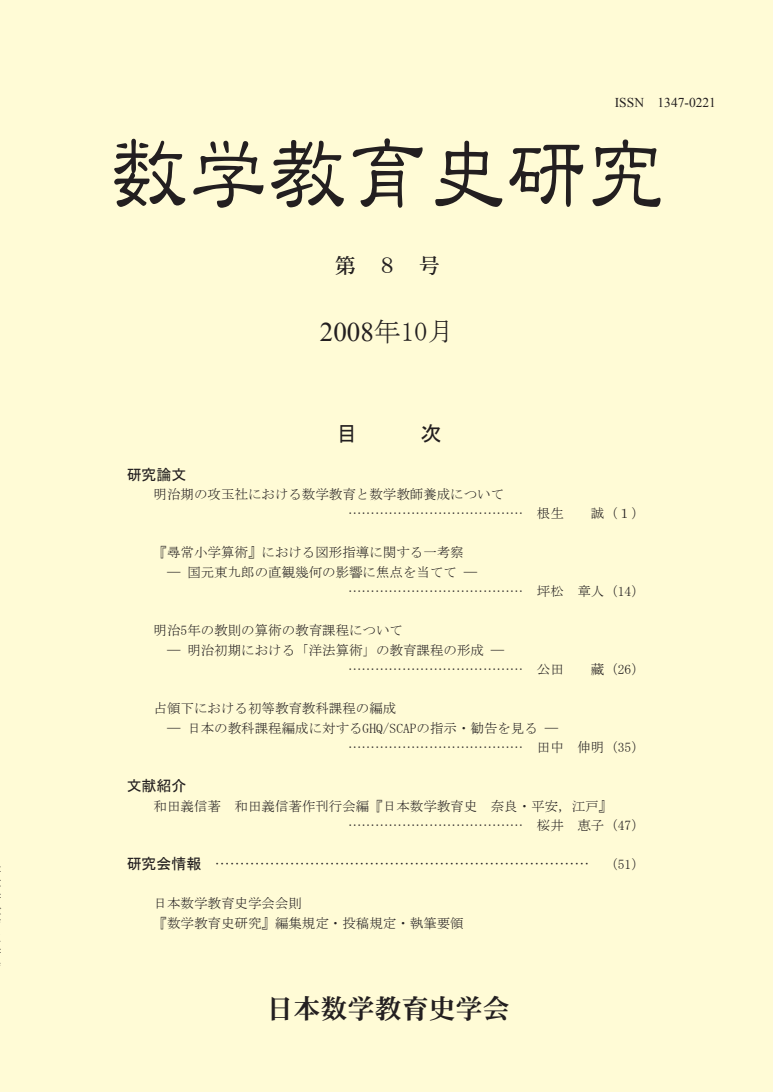Volume 8
Displaying 1-11 of 11 articles from this issue
- |<
- <
- 1
- >
- >|
-
2008Volume 8 Pages 0
Published: 2008
Released on J-STAGE: November 13, 2023
Download PDF (206K)
Articles
-
2008Volume 8 Pages 1-13
Published: 2008
Released on J-STAGE: March 10, 2022
Download PDF (893K) -
2008Volume 8 Pages 14-25
Published: 2008
Released on J-STAGE: March 10, 2022
Download PDF (1031K) -
2008Volume 8 Pages 26-34
Published: 2008
Released on J-STAGE: March 10, 2022
Download PDF (757K) -
2008Volume 8 Pages 35-46
Published: 2008
Released on J-STAGE: March 10, 2022
Download PDF (2189K)
-
2008Volume 8 Pages 47-50
Published: 2008
Released on J-STAGE: March 10, 2022
Download PDF (623K) -
2008Volume 8 Pages 51
Published: 2008
Released on J-STAGE: November 13, 2023
Download PDF (108K) -
2008Volume 8 Pages 52
Published: 2008
Released on J-STAGE: November 13, 2023
Download PDF (147K) -
2008Volume 8 Pages 53-54
Published: 2008
Released on J-STAGE: November 13, 2023
Download PDF (289K) -
2008Volume 8 Pages 55
Published: 2008
Released on J-STAGE: November 13, 2023
Download PDF (202K) -
2008Volume 8 Pages 56
Published: 2008
Released on J-STAGE: November 13, 2023
Download PDF (205K)
- |<
- <
- 1
- >
- >|
